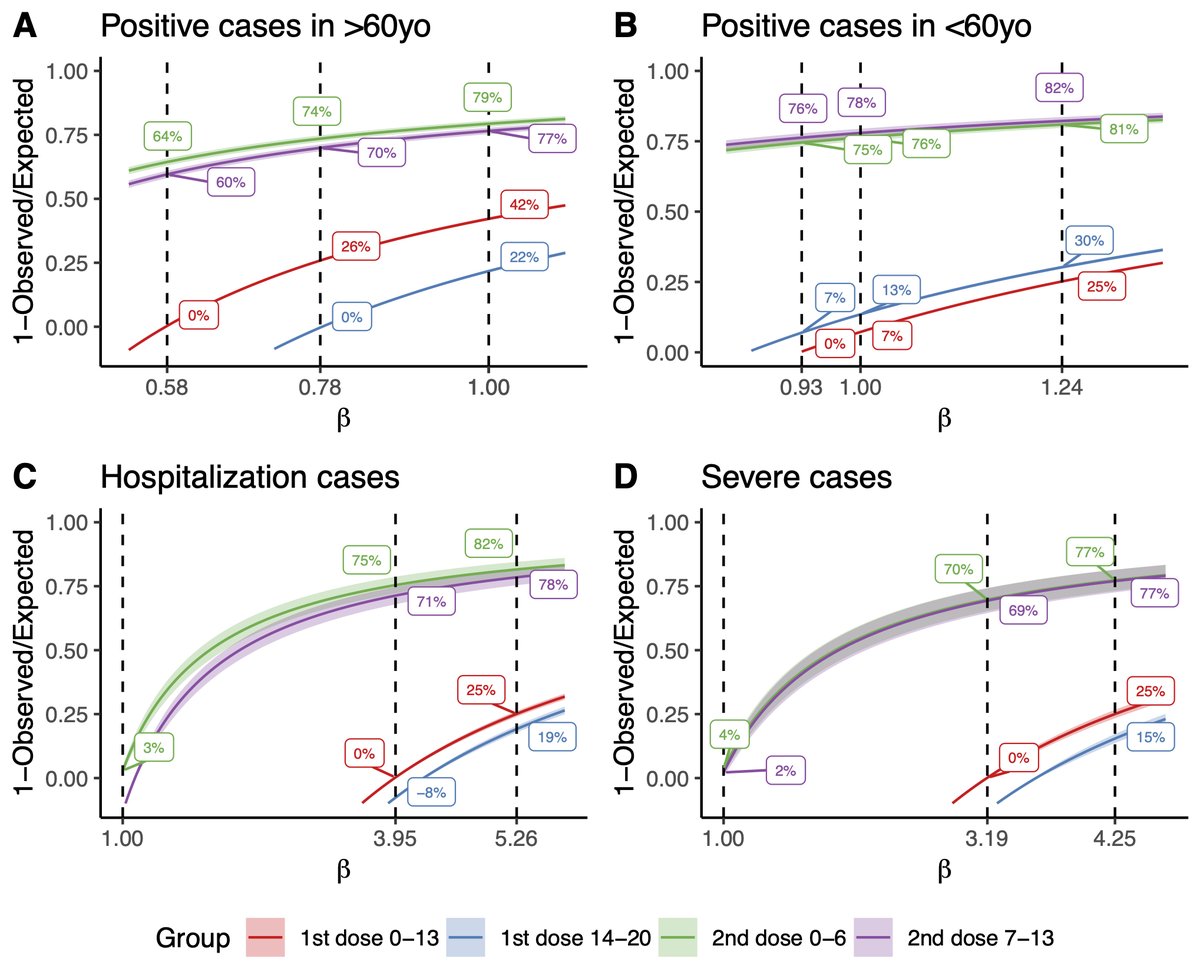
Third update of my estimations of vaccination effectiveness. Not as optimistic as my previous posts. Data is based on cases of vaccinated individuals up to February 9th. Findings:
1. No protection up to day 21. We only see protection from day 0 of the 2nd dose. ==>
1. No protection up to day 21. We only see protection from day 0 of the 2nd dose. ==>

2. Protection after 2nd dose from being positive (not to be confused by transmission): 60-74% for ages 60+, 75-78% for ages 60-.
3. Protection after 2nd dose from hospitalization: 71-82%. From severe case 69-77%.
3. Protection after 2nd dose from hospitalization: 71-82%. From severe case 69-77%.
For an explanation of the methodology please take a look at github.com/dviraran/covid…
(updated with data up to Feb 5th)
(updated with data up to Feb 5th)
Differences from previous analyses –
1. 4th group now is days 7-13 after 2nd dose, not 7+. This reduces the problem of delayed hospitalizations.
2. Empirical identification of beta values (using 0-25% protection in the first 2 weeks).
1. 4th group now is days 7-13 after 2nd dose, not 7+. This reduces the problem of delayed hospitalizations.
2. Empirical identification of beta values (using 0-25% protection in the first 2 weeks).
Re finding 1 - @KalksteinNir showed today reduction in 3rd week compared to 2nd week after 1st dose. However, compared to week 1+2, Maccabi also doesn’t see a reduction.
https://twitter.com/KalksteinNir/status/1359566811335974919
Previous posts:
1.
2.
Many thanks to @H_Rossman with the data.
1.
https://twitter.com/dvir_a/status/1358324961501413377
2.
https://twitter.com/dvir_a/status/1357653031018508290
Many thanks to @H_Rossman with the data.
Please disregard the orange line. We don't have enough time to believe that this effect is reliable. 

• • •
Missing some Tweet in this thread? You can try to
force a refresh




